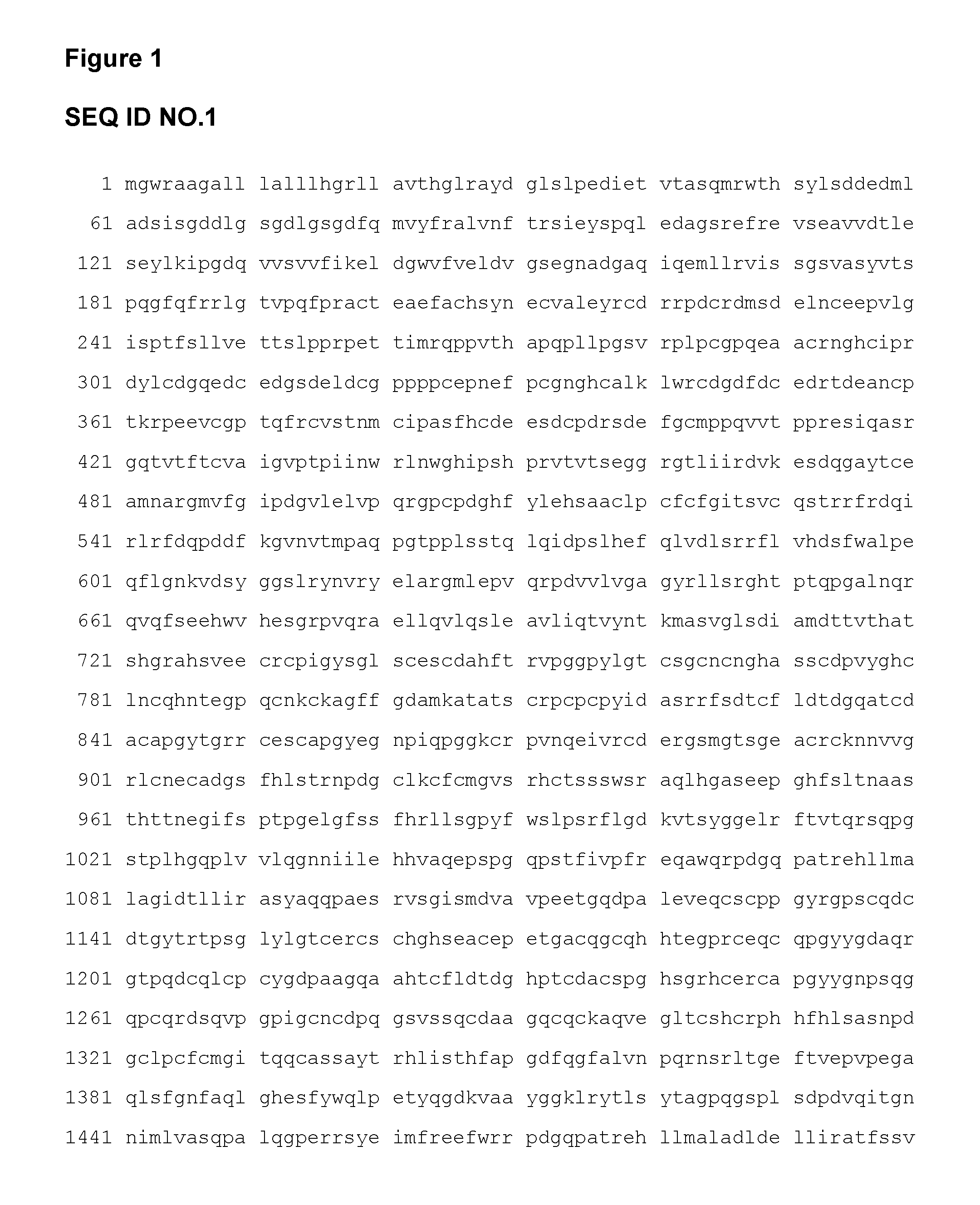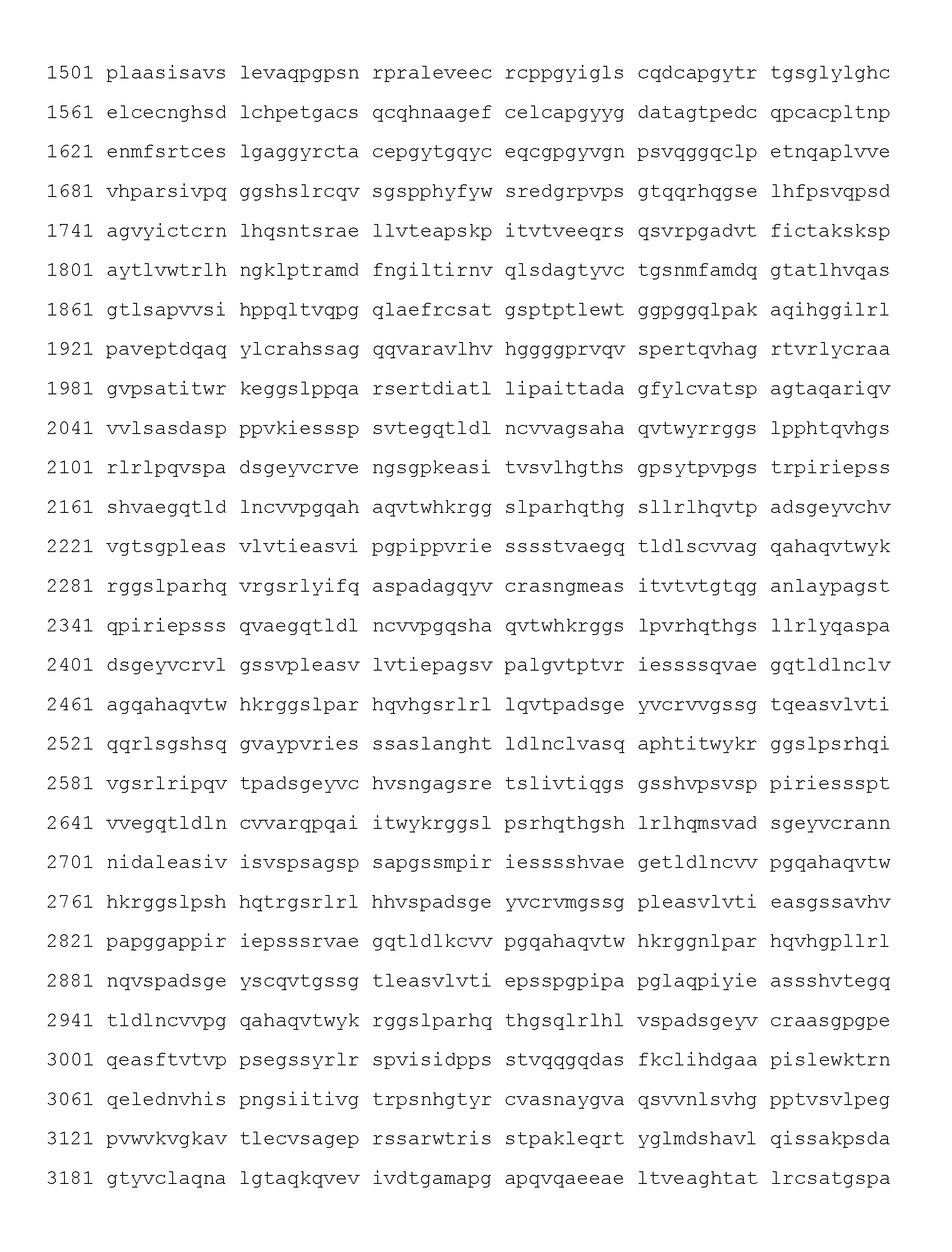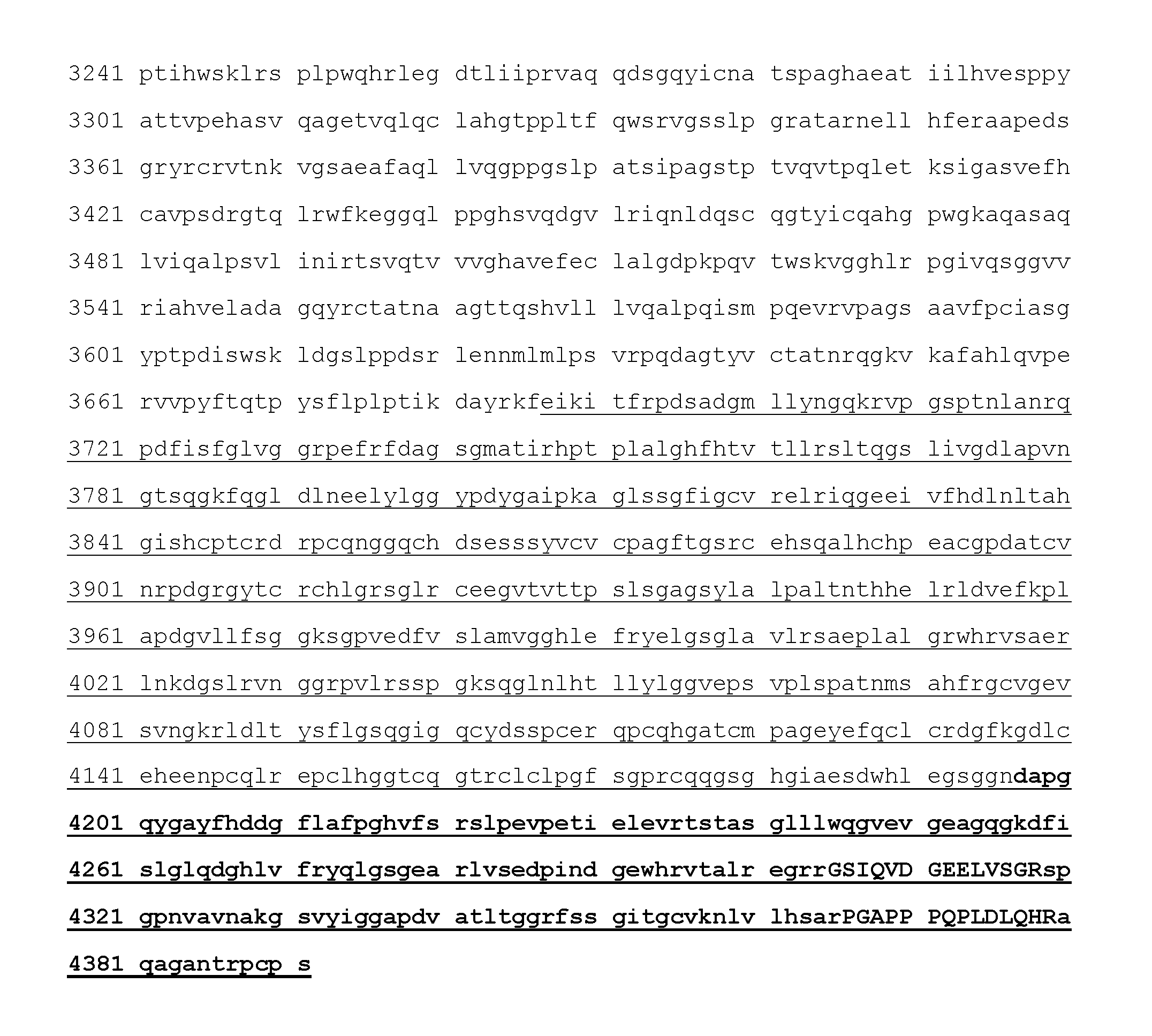Perlecan as a biomarker for renal dysfunction
a biomarker and renal dysfunction technology, applied in the field of proteinand/or peptide-based biomarkers, can solve the problems of renal dysfunction, contribute to or exacerbate the failure of other major organ systems and death, and the renal dysfunction is often insidious, so as to achieve the effect of increasing mortality
- Summary
- Abstract
- Description
- Claims
- Application Information
AI Technical Summary
Benefits of technology
Problems solved by technology
Method used
Image
Examples
example 1
MASSterclass Targeted Protein Quantitation for Early Validation of Candidate Markers Derived from Discovery
MASSTERCLASS Experimental Setup
[0307]MASSterclass assays use targeted tandem mass spectrometry with stable isotope dilution as an end-stage peptide quantitation system (also called Multiple Reaction Monitoring (MRM) and Single Reaction Monitoring (SRM). The targeted peptide is specific (i.e., proteotypic) for the specific protein of interest. i.e., the amount of peptide measured is directly related to the amount of protein in the original sample. To reach the specificity and sensitivity needed for biomarker quantitation in complex samples, peptide fractionations precede the end-stage quantitation step.
[0308]A suitable MASSTERCLASS assay may include the following steps:[0309]Plasma / serum sample[0310]Depletion of human albumin and IgG (complexity reduction on protein level) using affinity capture with anti-albumin and anti-IgG antibodies using ProteoPrep spin columns (Sigma Aldri...
example 2
Screening of Acute Dyspnea Samples for PERLECAN
[0335]In this example the clinical utility of PERLECAN measurement for the evaluation of dyspneic patients was assessed.
[0336]The 299 clinical samples used in this study are part of the BASEL V cohort, a prospective study on consecutive patients presenting themselves to the ED of the university Hospital of BASEL with dyspnea as the most prominent symptom (part of this cohort is described in Potocki et al., Journal of Internal Medicine 2010 January; 267(1):119-29). The gold standard for the diagnosis of acute heart failure was based interpretation of two independent cardiologists of all medical records pertaining to the patient including 90 day follow up data and BNP levels. Based on this, 56% (n=168) of patients were adjudicated to have an acute heart failure event, others were classified as dyspnea non-heart failure. A wide range of clinical and marker variables was collected (for summary see Table 1) including patient demographics, me...
example 3
PERLECAN Associates with Kidney Function Parameters
[0340]Screening acute dyspnea patients (example 2) for PERLECAN levels showed a clear association of PERLECAN level with all available clinical parameters related to kidney function as indicated by the low p-values for Spearman rank correlation with estimated glomerular filtration rate (eGfr), creatinin levels and blood urea nitrogen (BUN) levels and the low Wilcoxon p-values for presence / absence of history of kidney failure (summarized in Table 2). FIG. 2 illustrates the correlation of PERLECAN with eGfr, indicating PERLECAN is a good indicator of glomerular filtration. The correlation of PERLECAN with filtration is further corroborated by correlation with Cystatin C, a known good marker for Gfr. Cystatin C was also measured in these samples using MASSterclass technology. The correlation of PERLECAN with Cystatin C and eGfr remains valid after correcting for presence of acute decompensated heart failure (Table 2).
[0341]Table 2: Sum...
PUM
| Property | Measurement | Unit |
|---|---|---|
| time | aaaaa | aaaaa |
| pH | aaaaa | aaaaa |
| mass spectrometry analysis | aaaaa | aaaaa |
Abstract
Description
Claims
Application Information
 Login to View More
Login to View More - R&D
- Intellectual Property
- Life Sciences
- Materials
- Tech Scout
- Unparalleled Data Quality
- Higher Quality Content
- 60% Fewer Hallucinations
Browse by: Latest US Patents, China's latest patents, Technical Efficacy Thesaurus, Application Domain, Technology Topic, Popular Technical Reports.
© 2025 PatSnap. All rights reserved.Legal|Privacy policy|Modern Slavery Act Transparency Statement|Sitemap|About US| Contact US: help@patsnap.com



